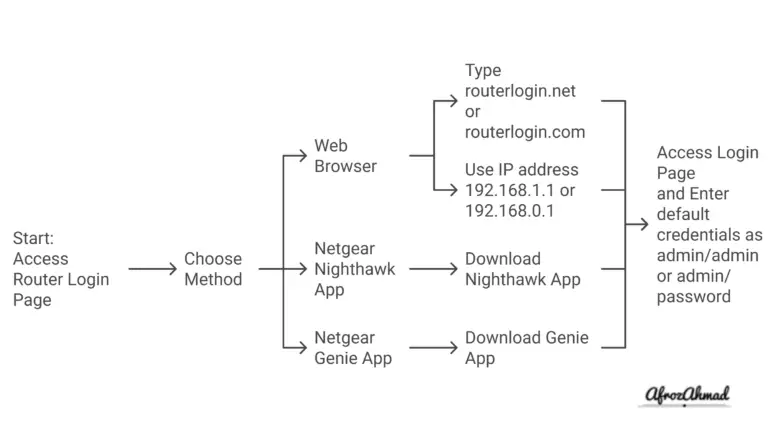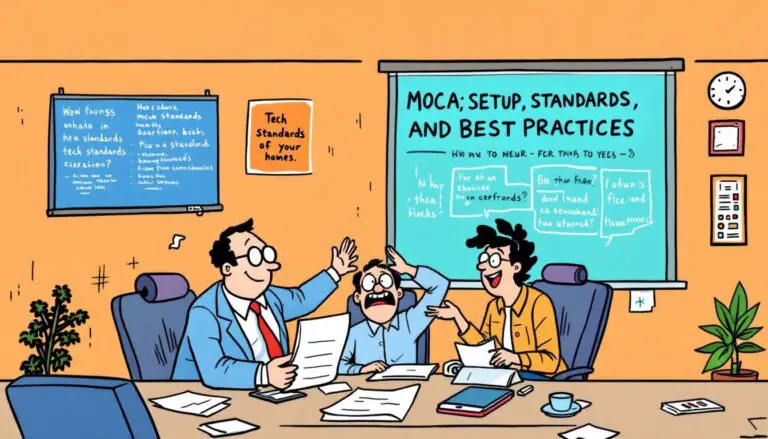Having slow internet speeds is one of the most frustrating issues that can plague your day. When you pay for fast Xfinity internet, but it crawls at a snail’s pace, it can quickly derail your productivity and enjoyment.
If you’ve noticed your Xfinity connection slowing to a halt, don’t panic. The good news is that with some targeted troubleshooting, you can get to the bottom of what’s causing the problem and take steps to boost your speeds.
In this comprehensive guide, we’ll dive into the most common reasons for slow Xfinity internet and provide tips to diagnose and fix the issue once and for all. Where helpful, we also note 2025 plan updates (unlimited data and price‑lock options) and recent network improvements that can affect real‑world performance, including higher upload speeds and ultra‑low‑lag technology for gaming and video calls.
Quick Checks and Fixes
- Run speed tests and check your plan details to verify you’re getting the speeds you pay for. Use this fast triage flow: check the Xfinity app for outages → test on Ethernet → compare Wi‑Fi vs. wired → confirm your plan (new national tiers include unlimited data) → review equipment health.
- Basic troubleshooting like restarting your Xfinity router or PC/Mobile, changing router location, and using Ethernet over Wi‑Fi can often resolve speed problems. If latency is the issue (lag in games/video calls), focus on wired tests and minimizing interference.
- Consider upgrading your Xfinity plan if your household requires more bandwidth. The current national tiers (300/500/1 Gbps/2 Gbps) include the Xfinity WiFi Gateway and unlimited data, with optional 1‑year or 5‑year price locks.
- Contact Xfinity customer support if issues persist after troubleshooting — they can diagnose problems and send technicians if needed.
How to Diagnose If Comcast Xfinity Internet is Slow?
When you notice slow internet speeds, your first move should be confirming that it’s not a temporary fluke. Follow these steps to test the performance of your Xfinity connection:
- Run speed tests – Use a reliable speed test tool and run tests several times a day to see if you consistently get slower speeds than what your plan offers. Note download, upload, and latency (ping/jitter) to spot bandwidth vs. lag issues.
- Check wired speeds – Connect your computer directly to your router with an Ethernet cable and re-run speed tests. This gives you an accurate reading of your maximum speeds and helps isolate Wi‑Fi problems.
- Review Xfinity app – The Xfinity app will note any network outages in your area that could explain temporary slow speeds.
- Note the timing – Take note if slowdowns occur at specific high-traffic times, like evenings, indicating network congestion or bufferbloat. Latency spikes can make things feel slow even when bandwidth is fine.
- Contact support – If you determine the issues are with Xfinity’s network, reach out to customer support to investigate and report the problem.
- Check the below Table to correctly interpret the speed.
Table: Speed Test Interpretation Guide
| Speed Test Result | Interpretation | Recommended Action |
|---|---|---|
| Close to Advertised Speed | Network is performing well | No action needed |
| Far Lower than Advertised Speed | Possible issues with connection | Troubleshoot or contact Xfinity |
Once you have a sense of the scope and timing of the issue, you can move on to troubleshooting steps.
How to Test Your Xfinity Internet Speed?
Before you try troubleshooting your slow internet, it’s important to test your actual speeds to get a baseline. Here are a few quick ways to check your Xfinity internet speeds:
- Use Xfinity’s speed test site – For the most accurate results, use Xfinity’s official speed test site. This tests speeds directly from their servers.
- Use a third-party speed test – Alternatively, you can test your Xfinity speed using a third-party site like Speedtest.net. This gives you an independent measurement.
- Check speed at the modem – To isolate issues, connect a computer directly to your modem via Ethernet cable and run a speed test. Compare these results to Wi‑Fi speeds and check latency numbers.
- Review your plan details – Log into your Xfinity account and verify the speeds you’re paying for. Compare your speed test results to your plan’s max speeds. Many customers now have higher uploads than before due to recent speed upgrades.
Once you have your actual speeds, if they fall far short of what your plan offers, it’s time to start troubleshooting!

Why is my Xfinity Internet Slow – Causes with Fixes
Here are some causes for slow Xfinity internet, along with possible explanations and solutions for each cause:
Network congestion:
This happens when there are too many users or devices accessing the internet at the same time, causing the network to slow down or become unstable. This is more likely to occur during peak hours, such as evenings or weekends, when more people are online.
To fix this, you can try the following:
- Check for local outages using the Xfinity Status Center Outage Map or by calling 1-800-XFINITY. If there is an outage, you may have to wait until it is resolved by Xfinity.
- Optimize Wi‑Fi first. Many xFi gateways automatically manage channels and may not expose manual channel selection. Improve performance by moving/raising the gateway, separating 2.4 GHz and 5 GHz if supported, reducing interference, or using your own router with the gateway in bridge mode if you need full channel control.
- Upgrade your internet plan to get more bandwidth and speed. The latest national plans (300/500/1 Gbps/2 Gbps) include unlimited data and an Xfinity WiFi Gateway, with optional 1‑year or 5‑year price locks.
Data cap:
This happens when you are on a legacy usage‑based plan and exceed your monthly data allowance. Historically, those plans used a 1.2 TB data plan with overage charges of $10 per 50 GB (capped at $100 per month). Throttling for exceeding the cap was not standard policy. In 2025, Comcast launched new national plans that include unlimited data by default; customers on older capped plans can switch to the new unlimited tiers. To fix this, you can try the following:
- Check your data usage and plan details on the Xfinity website or app. Confirm whether you are on a legacy capped plan or a new national unlimited plan. Set up alerts to keep track of usage if you remain on a capped plan.
- Switch to the new unlimited plans if available in your area. Current national tiers include unlimited data and the Xfinity WiFi Gateway, with optional 1‑year or 5‑year price‑lock options.
- Reduce your data consumption by adjusting online activities: stream in HD instead of 4K when possible, turn off automatic cloud backups or large game updates during peak times, and schedule OS/app updates during off‑hours.
- Cut back on less important devices using your internet to ease the burden on your bandwidth.
Equipment issues:
This happens when there is a problem with your modem, router, or cables that affects your internet connection. This could be due to faulty, outdated, or incompatible equipment, or physical damage or wear and tear. To fix this, you can try the following:
- Make sure the Xfinity router firmware is upgraded to the latest available version to fix bugs and enhance performance.
- Restart your equipment by unplugging it for one minute and plugging it back in. This can reset your connection and clear any temporary issues. You can also restart your equipment using the Xfinity app or website.
- Run a diagnostic check on the Xfinity website or app to see if there are any issues with your equipment. You can also run a full network test in the Xfinity app if you have an xFi Gateway. If the test detects any problems, it will give you instructions on how to fix them or contact Xfinity support.
- Replace or upgrade your equipment if it is faulty, outdated, or incompatible. You can check the compatibility of your equipment on the Xfinity website or app. You can also rent or buy new equipment from Xfinity or use your own approved equipment.
WiFi issues:
This happens when there is a weak or unstable WiFi signal that affects your wireless devices. This could be due to the distance or location of your router, obstacles or interference from other objects or devices, or the number of devices connected to your WiFi. To fix this, you can try the following:
- Move closer to your router or move your router to a central or elevated location. This can improve your WiFi signal strength and coverage. You can also avoid placing your router near metal objects, appliances, or walls that can block or interfere with the signal.
- Use a wired Ethernet connection instead of WiFi for devices that need faster or more stable internet, such as gaming consoles, smart TVs, or computers. This reduces load on Wi‑Fi and helps with latency‑sensitive tasks.
- Improve your WiFi coverage by adding xFi Pods or using a mesh network system. If you require manual channel control that your xFi gateway doesn’t expose, consider using your own router with the gateway in bridge mode.
Table: Optimizing Xfinity WiFi Router Placement
| Placement Tip | Benefit |
|---|---|
| Central Location | Even distribution of Wi‑Fi signal |
| Elevated Position | Reduces signal interference |
Device issues:
This happens when there is a problem with your device’s hardware, software, or settings that affects your internet connection. This could be due to an outdated or corrupted operating system, browser, or app, a full or slow storage, a virus or malware infection, or incorrect network settings. To fix this, you can try the following:
- Update your device’s operating system, browser, or apps to the latest version. This can fix any bugs or glitches that may affect your internet performance. You can also clear your browser’s cache and cookies to remove any unwanted or temporary files.
- Disable any unnecessary background processes, such as downloads, updates, or scans, that may use up your internet bandwidth or slow down your device. You can also close any tabs or apps that you are not using to free up memory and CPU resources.
- Scan your device for viruses or malware that may harm your device or steal your data. You can use a trusted antivirus or anti-malware software to detect and remove any threats. You can also use the Xfinity xFi Advanced Security feature to protect your devices from online threats.
- Check your device’s network settings and make sure they are compatible with your network and internet plan. You can check your network adapter’s properties, your IP address, your DNS server, and your firewall settings. You can also use the Xfinity website or app to check your WiFi settings and security.
When to Contact Xfinity Customer Service
If you’ve worked through all the troubleshooting steps and your Xfinity internet continues crawling at a snail’s pace, it’s a good idea to reach out to their customer support team. Let them know you’ve already tried resetting modems, changing router settings, upgrading equipment, and more with no improvement.
You should also contact Xfinity right away if you experience a sudden drop in internet speeds and believe it’s due to a wider network outage. Their team can confirm any service problems in your area and provide status updates.
Some key times to get Xfinity customer service involved include:
- You experience very slow speeds or loss of connectivity frequently at the same times of day.
- Your internet is performing far below the speeds advertised in your plan.
- Speed tests show an issue even when connected directly to the modem with Ethernet.
- You believe the slowdowns may be caused by legacy data caps or usage overages on an older plan and want to switch to an unlimited tier.
- Network problems persist despite replacing or upgrading your own equipment.
- There are no notifications about outages, but your internet service goes out or slows to a crawl.
Reaching out to the Xfinity experts can help get a resolution when your troubleshooting efforts just aren’t cutting it. Be ready to provide details about your plan, equipment, and the timing of the issues.
Preventing Slow Xfinity Internet
While sudden slow internet can be frustrating, you’re not completely at the mercy of your ISP. Here are some tips to help avoid Xfinity speed problems:
- Monitor data usage – If you are on a legacy usage‑based plan, stay under your monthly data cap or switch to a new unlimited tier to eliminate overage charges.
- Limit bandwidth-heavy activities during peak hours like streaming or gaming to reduce congestion issues.
- Use a router only for internet, not as a universal hub for smart home and other devices to avoid overloading it.
- Keep equipment updated – Don’t use outdated modems or routers that can’t handle faster speed tiers or modern features that improve uploads and latency.
- Use a wired connection for stationary devices like desktop PCs or home entertainment systems whenever possible.
- Test speeds regularly to identify problems before they become severe.
- Contact support at the first sign of trouble to get ahead of potential larger issues.
Check out our Internet Service Provider comparison guides, where we compared Xfinity with Spectrum and Google Fiber.
- Spectrum vs Xfinity: Which Internet Provider to Choose? Expert Comparison
- Google Fiber vs Xfinity: Which is The Better Choice?
Take Control of Your Xfinity Internet Speeds
Dealing with a persistently slow internet connection can be a major annoyance and time waster. But armed with the right troubleshooting techniques, you can get to the source of the problem and take action.
Follow the tips outlined in this guide to run speed tests, update equipment, optimize your home network, adjust Xfinity router settings, and reach out to customer support if needed. If your plan is older, consider switching to the current unlimited tiers with a price‑lock option.
Taking control of your Xfinity internet speeds means you can spend less time waiting for web pages to load and more time enjoying an internet experience as fast as it should be. Don’t tolerate an internet slowdown – take steps today to get your Xfinity connection up to speed!
Frequently Asked Questions
Q: Why is my Xfinity internet slow all of a sudden?
A: Sudden slowdowns are often caused by temporary network congestion, a local outage, Wi‑Fi interference, or issues on a specific device. Run a wired speed test and check the Xfinity app for outages. If latency (not speed) is the problem, minimize Wi‑Fi interference or connect via Ethernet for gaming and video calls.
Q: How can I make my Xfinity internet faster?
A: Reset your equipment, use a wired connection, adjust router placement, reduce interference, update firmware, and limit devices. If you’re on a legacy capped plan and hit usage limits, consider switching to the new unlimited tiers with optional price locks.
Q: What should my Xfinity internet speeds be?
A: Your Xfinity internet speeds should reliably reach up to the max download and upload speeds advertised in your current plan when connected via Ethernet. Many tiers received recent upload increases; compare your results to the plan details in your account.
Q: Why is Xfinity internet slow at night?
A: Slowdowns at night are typically due to network congestion as more customers are online during peak evening hours. Schedule large downloads off‑peak, use Ethernet for latency‑sensitive tasks, and keep your gateway in an optimal location.
Q: Is there anything I can do if Xfinity is having an outage?
A: During an outage, you’ll generally need to wait for restoration. Follow Xfinity’s support channels for updates and set notifications in the app. Once service returns, rerun a wired speed test to confirm performance.
- MikroTik CRS305-1G-4S+ Review: The Ultimate Budget SFP+ Switch Guide - December 25, 2025
- 10 Best Network Switches for Home Networks in 2026 (Top Picks) - December 24, 2025
- 7 Best Budget Routers For Small Business Networks (Under $200) - December 22, 2025




